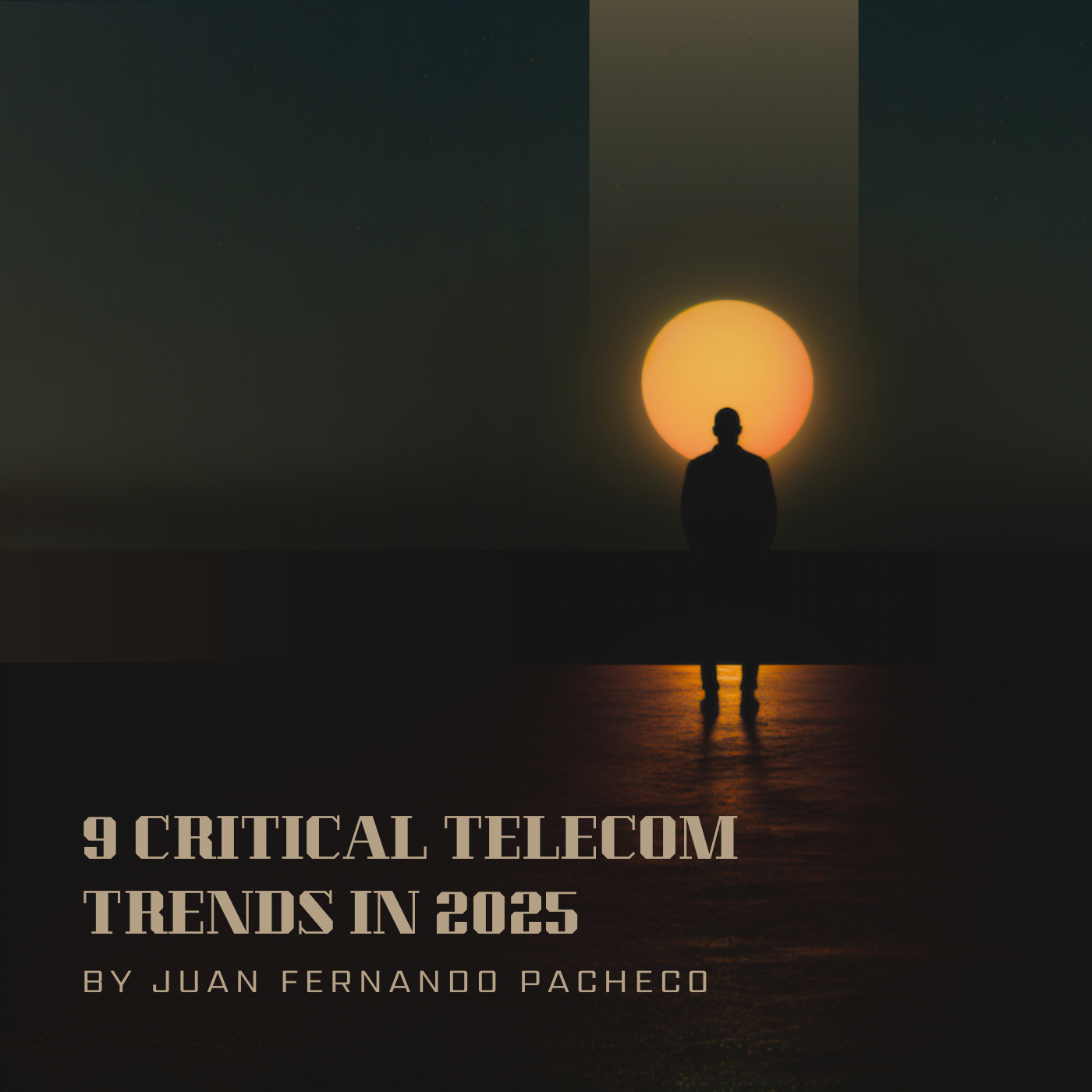Hosts dive into Juan Fernando Pacheco’s analysis of telecom’s future trends in 2025 as a tipping point where technology converges with societal transformation. Here’s the distilled vision:
1. AI: From Hype to Hyper-Efficiency
Self-Healing Networks: AI-driven predictive analytics will autonomously resolve outages, optimizing performance by anticipating issues like fiber degradation.
Customer Service 2.0: NLP-powered chatbots evolve into “virtual agents,” resolving complex queries with personalized, 24/7 support.
Proactive Infrastructure: Machine learning predicts equipment failures (e.g., environmental impacts on cables), slashing downtime.
2. 5G Matures: Beyond Speed to Strategic Enablement
Consumer Revolution: Lag-free 4K/8K streaming, immersive AR/VR, and cloud gaming become mainstream.
Enterprise Edge: Private 5G networks empower industries (manufacturing, healthcare) with ultra-reliable, low-latency IoT ecosystems.
3. Bridging the Digital Divide: Satellites as Game-Changers
LEO Satellite Surge: Starlink-like networks deliver affordable broadband to remote areas, fostering competition and lowering global costs.
4. Cybersecurity: The New Battleground
Layered Defense: Telecoms invest in AI firewalls, threat intelligence, and intrusion detection to safeguard exploding IoT endpoints.
Human Firewalls: Employee training combats phishing risks, while encryption and privacy-first policies protect customer data.
5. Convergence: Telecom as the Backbone of Innovation
Cross-Industry Fusion: Networks underpin smart cities, autonomous vehicles, and telemedicine, spurring partnerships between telcos and tech giants.
6. Holographic Communication: Sci-Fi Meets Reality
3D Interaction Breakthroughs: 5G enables real-time holograms for remote surgery, virtual events, and immersive training—no lightsabers yet, but transformative potential.
7. Generative AI: Personalization vs. Privacy
Hyper-Tailored Services: AI crafts dynamic data plans and anticipates user needs, but raises ethical concerns over data ownership.
Job Evolution: Roles shift toward AI oversight, demanding reskilling in tech and empathy-driven customer roles.
8. Cloud-Native Networks: Agility at Scale
Architectural Shift: Telecoms adopt cloud infrastructure for scalability, cost savings, and leveraging hyperscaler security (AWS, Azure).
9. Sustainability: Green Tech Goes Mainstream
Net-Zero Push: Renewable energy adoption, energy-efficient hardware, and circular economies (device recycling) dominate ESG agendas.
Ethical Tech Imperative: Combating AI bias, ensuring equitable access, and transparent data use become boardroom priorities.
The Big Picture:
The hosts underscore that these trends are interdependent—AI fuels 5G’s potential, satellites democratize access, and sustainability shapes every innovation.
The challenge? Balancing breakneck advancement with ethical guardrails to ensure tech uplifts, rather than divides, global communities.
Final Takeaway:
2025 isn’t just about faster networks; it’s about telecoms becoming stewards of a connected, equitable future. As Pacheco’s crystal ball suggests, the industry’s success hinges on marrying innovation with integrity.


